phone +7(495)120-46-92
Email [email protected]
feedback form
Send us an email on Telegram
Contact us on WhatsApp

- Aids for the elderly with a femoral neck fracture
- Medical functional bed
- Why walk?
- Walk right and do no harm
- What are the effects of exercise?
- The main sports that are contraindicated in gonarthrosis
- CONTACT
- Which joints are affected by sports activities?
- Development of arms and legs
- other skills
- See
- Hear
- Speak
- social behaviour
- What are the benefits of exercise therapy for osteoarthritis in the knee?
- Exercise recommendations for older people
- When not to exercise?
- Rules for training for knee osteoarthritis
- Causes of sciatic nerve entrapment
- Exercises in the treatment of the sciatic nerve
- How to improve cerebral circulation
- When to see a doctor right away
Aids for the elderly with a femoral neck fracture
This injury is extremely dangerous and is fatal in about a third of cases within a year if operated on; without surgery, the situation is even worse.
To reduce the risk, you should:
- Have surgery to insert an artificial joint as soon as possible (recommended within the first 24 hours after the fracture).
- Carry out the rehabilitation required by the attending physician.
- Switch your diet to a healthier diet with more natural dairy products and vegetables.
- Prevent depression by supporting the elderly.
The most effective rehabilitation requires the use of special medical and home aids.
Medical functional bed
The device is quite expensive, ranging from €500 to €1,300. Half of that amount can be saved by buying a used machine and selling the bed at the end of rehabilitation to recoup some of the cost.
What a functional bed is used for with a broken neck:
– It allows to adopt a sitting and semi-sitting position. This simplifies care and makes rehabilitation more pleasant, which has a positive effect on psychological well-being.
– More importantly, the load on the heart increases and the load on the respiratory organs decreases, which prevents cardiac atrophy and pneumonia in the first stages of rehabilitation, when the patient cannot yet get up, which is very important!
– Leg height adjustment allows you to gradually change the position of the bed in relation to the floor, allowing the leg to bend more and more as it heals.
A very important point in case of femoral neck fracture. With regular beds, getting up is a major risk factor that complicates rehabilitation.

No matter what type, the main thing is that the headboard can be raised and the height of the legs can be adjusted, either manually or electrically.
Of course, the optimal solution is electrically adjustable beds from European manufacturers, which are the most comfortable and do not cause unnecessary nausea.
Recommended manufacturers: Burmeier, avoid, Elbur, Stiegelmeyer, Invacare.
But if buying these devices weighs heavily on your budget, you can also get by with inexpensive Chinese counterparts, barry, DHC.
Why walk?
Each of us takes several thousand steps every day, even if we only move around the house or walk short distances. Walking comes naturally to us; it is a physiologically known activity that engages different muscle groups. We don't think much about walking, but still walking requires a lot of effort and energy for the body.
- It activates metabolism in all systems and organs, including joints;
- strengthens muscles and ligaments;
- It also helps exercise the joints, which is an effective way to prevent stagnation;
- Happy hormones are formed - people who walk a lot suffer from depression less often.
Walk right and do no harm
If you have no pain or discomfort, you can confidently run any distance. This tiredness will do you good. If you have osteoarthritis in your ankle, knee, or hip, be careful not to harm yourself with incorrect exercises:
- Walk in comfortable shoes without high heels so that the load on your lower limbs is evenly distributed;
- if you have osteoarthritis, avoid climbing stairs – walk on level ground;
- Don't walk if you're in pain - rest your joints.
What are the effects of exercise?
Doctors advise not to do without physical activity even if you have problems with the musculoskeletal system. The exception is when the pathology is aggravated so that any movement is difficult and causes severe pain. Each technique has a number of contraindications that a physiotherapist or orthopedist will tell you about when prescribing it. For example, an acute systemic infection, fever, worsening of osteoarthritis.
Daily exercise or other physical activity increases blood flow, provides nutrients, and promotes tissue regeneration.
After exercise, a temporary rest is advisable. This is especially true for patients whose arthrosis is not in the initial stage, but in the second or third stage.
Some patients believe that exercise alone is enough to neutralize the disease. This is incorrect because doctors recommend a holistic approach consisting of medication, physical therapy with heat, and physical therapy. This slows down the progression of the disease. Even with a holistic treatment, the arthritis that has started cannot be stopped completely. However, it can be kept under control.
Especially if you regularly go to the doctor, undergo instrumental examinations and adjust the methods of treatment. Regular joint examinations using X-ray, ultrasound and biopsy, followed by histological examination of the defect contents are mandatory.
The main sports that are contraindicated in gonarthrosis
- weightlifting;
- bench press;
- Athletics;
- Football,
- volleyball
- basketball
- Hockey;
- Tennis;
- When osteoarthritis occurs, knee movements should become more cautious and straight forward, avoiding repetition, jerky movements, and sudden impacts.
- Care should be taken to avoid undue stress. Walking with arthrosis should also not be extended for too long, as excessive stress on the joints further damages them.
- Appropriate footwear should be selected that must be adapted to the respective training and e.g. B. cushions the landings.
- A pre-workout warm-up is essential.
- Stretching should be part of your workout. At the beginning of the workout, all muscles can be stretched, while warming up can only stretch the muscles involved in the workout. Stretching should be started with small amplitudes. This:
- reduces the risk of injury, increases flexibility of muscles and ligaments;
- has a massaging effect;
- promotes muscle flexibility;
- improves microcirculation and prepares blood vessels for exercise;
- After training, it helps muscles recover better;
- Correct exercise technique is very important.
- When training, do not forget knee pads and other orthopedic insoles.
- The load starts with a minimum and should be gradually increased.
- Don't do squats or deep squats.
- Do not forget to adjust the diet as you increase the load.
- There should be no pain when exercising.
Many types of sport are not only not forbidden in osteoarthritis of the knee, they are also strongly recommended by experts! People who already have knee osteoarthritis or knee pain, the chronically ill, the elderly and those who have not exercised for a long time should consult a doctor before actively participating in sports. And not only that: some yoga asanas can also aggravate the symptoms. Therefore, one should consult a doctor before deciding on any particular type of physical activity. The load should be gradually increased, the joint should not be overloaded and not allow painful sensations. Even during the waiver, the permissible loads should not be exceeded.
CONTACT
For detailed information about the treatment and prevention of orthopedic, rheumatological or neurological diseases, please contact us:
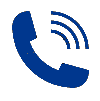 Tel. +7(495)120-46-92
Tel. +7(495)120-46-92
 Email: [email protected]
Email: [email protected]
feedback form  Send us a message on Telegram
Send us a message on Telegram  Contact us on WhatsApp
Contact us on WhatsApp

Our address is 11 Trifonovskaya St., Moscow
Which joints are affected by sports activities?
| type of sport | Which joints pose the greatest risk? |
| basketball | shoulder, knee, wrist |
| running, soccer | knees, hips, ankles |
| body building, judo | shoulder, knee |
| boxing | wrist, knee |
| horseback riding, skiing | knees, hips |
| Table tennis, surfing, shooting | ankle, elbow, wrist |
| hockey | knees, ankles |
| fencing | shoulder, knee |
| weightlifting | knees, hips, shoulders |
| Sport jumping, skydiving | hip, knee, ankle |
| Rockclimbing | All joints |
Don't rush into giving up the sport. Talk to your doctor and start by observing these rules:
- Use elastic bandages and knee pads to reduce stress.
- Start taking chondroprotectors containing chondroitin and glucosamine to help your joints recover.
- Take a series of intra-articular injections of a prosthetic synovial fluid called Noltrexin to stop friction on the cartilage surface and slow joint destruction.
- Add omega-3 fatty acids found in flaxseed oil, olive oil, fatty fish, broccoli, egg yolks, beef and cabbage to your diet.
- Never train in pain.
Strength training should not be done more than once a week.
Development of arms and legs
At this stage of development, the child can hold two objects in one hand at once, for example, two dice. It learns to pull toys together on a string.
One of the most common games from 10 months is throwing games. When your baby is big enough, he will enjoy dropping toys and watching them fall, fly away and out of sight. And how happy your child is when he picks up the toy, gets it back and starts the exciting game again until he gets bored. However, he is not yet able to consciously let go of the toy; you have to help him, for example by gently knocking it out of his hand.
At the age of 10 months, the child often develops what is known as a pincer grip:
This additional way of gripping objects is derived from the pincer grip and allows the child to grip small objects even more precisely. With the pincer grip, the tip of the thumb meets the tip of the index finger – nail to nail. With this grip, you should be able to stretch your thumb out wide and rotate it toward your index finger. The joints of both fingers are slightly curved and look like pincers when grasping. This form of grasping is the most complex or varied grasping function that a child can master in the first year of life. Even adults cannot always perform the pincer grip correctly, as the thoracic spine must be fully erect. The more bent a person is and the rounder the thoracic spine is, the more restricted the mobility of the hands.
With this method, the child can increasingly pick up small pieces of bread, oatmeal, or peas as they eat, examine them, and put them in their mouths. The child now learns to use only the index finger for examination, for example when turning the wheels of a toy car.
other skills
See
From this stage, nothing remains hidden from the child: it can now see clearly even at a greater distance.
Hear
Your child begins to hear sounds that are outside of their field of vision. When a car drives by on the road, it listens carefully and may stop soon.
Speak
The child imitates the language more and more closely: it tries to repeat its first spontaneous words. Often the first word is 'mama' or 'papa'. Animals are identified by the sounds the animal makes, e.g. eg a dog of this age is called 'woof woof'.
social behaviour
The child begins to recognize his toys, ie he can distinguish his own toys from other people's. He smiles at his reflection, examines and touches the mirror, but does not yet recognize or identify himself. However, it now responds to its name.
Don't forget that the child is now beginning to check the parents' inhibitions: how consistent or inconsistent the adults are in their behavior; what really shouldn't be done and where mom and dad and other adults can show weakness. They are aware of when and with whom they want to cuddle.
In addition, children at this stage often try to imitate the actions of others, e.g. B. drinking from a cup or eating with a spoon.
What are the benefits of exercise therapy for osteoarthritis in the knee?
Movement normalizes the blood circulation in the connective tissue and stimulates the production of joint fluid (synovia). This mucous mass fills the joint cavity, prevents friction of the joint surfaces and inhibits cartilage destruction.
The positive effect of taking chondroprotectors depends entirely on the intensity of blood flow. Knee exercises for older people with arthrosis ensure better blood circulation in the affected joints and a quick supply of cartilage-building components.
Excessive exercise can worsen the overall condition, causing swelling and increasing pain in the affected area. Therefore, at least the first time you practice sport, you should consult a doctor.
In addition to restoring joint mobility, regular exercise also contributes to this
- to normalize blood pressure;
- improve metabolism;
- increase muscle tone;
- to strengthen the nervous system;
- eliminate insomnia.
Exercise recommendations for older people
When deciding on physical therapy to restore knee mobility, it is important to remember that it is generally not permissible to choose exercises for osteoarthritic knee joints at will. There are certain types of movement that are contraindicated for the patient in one case or another. Therefore, the exercise program must be selected individually by the doctor.
It should also be noted that movement is allowed as long as there is no pain. Any kind of discomfort in the knee joints is a contraindication to exercise, since they aggravate not only their condition, but also the course of the disease.
It is categorically forbidden to exert yourself too much during sports, so as not to provoke the opposite effect. All movements should be performed slowly, without jerks, gradually increasing the load (after the muscle tissue has sufficiently warmed up).
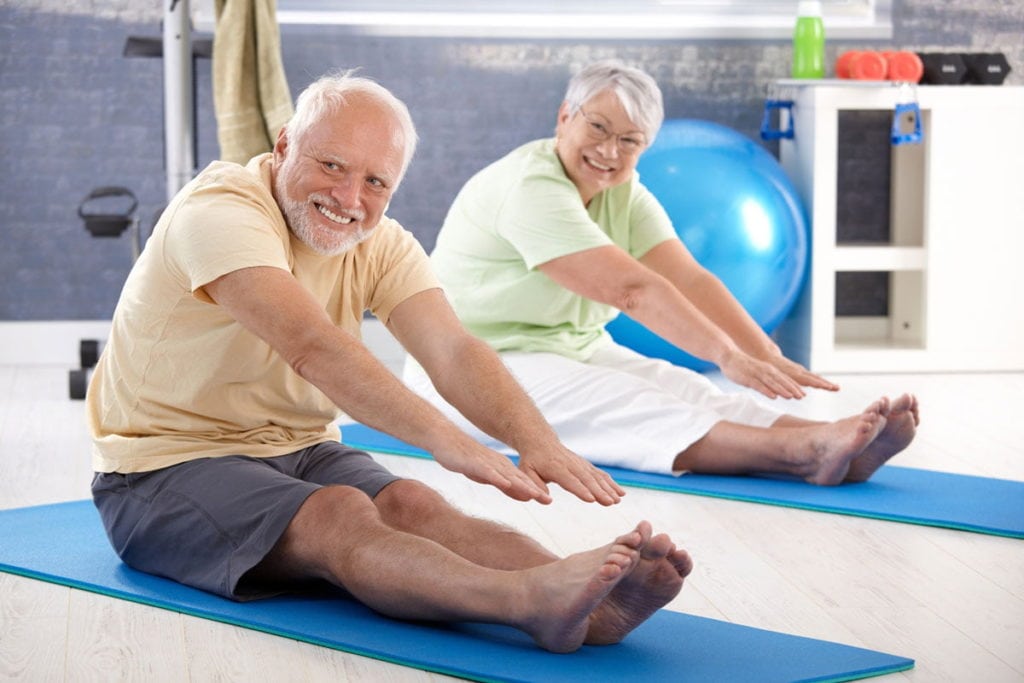
When not to exercise?
There are certain restrictions under which sports should be avoided:
- Elevated body temperature - above 37.7 °C;
- high blood pressure or intracranial pressure;
- Any disease in the acute phase;
- diseases of the blood, blood vessels or heart;
- the postoperative period.
Rules for training for knee osteoarthritis
In order for therapeutic exercises to be useful, certain recommendations must be observed:
- The aerobic exercise should take place in an outdoor place (parks, squares and similar places) where the elderly person does not feel a lack of oxygen. If the movement takes place in closed rooms, a constant supply of fresh air should be provided.
- When training the knee for osteoarthritis in the elderly, it is important that an intense exercise program is alternated with rest periods. The joints need to rest every six hours to allow the cartilage to regenerate normally.
- Knee pads (ortheses, knee splints) can be used to protect the knee from injury or overload.
Causes of sciatic nerve entrapment
Sciatica is a severe pain syndrome that can be caused by the following conditions
| osteochondrosis | Herniated lumbar disc is the most common cause of sciatic nerve entrapment. When the herniated disc begins, it puts pressure on the nerve roots in the spinal opening, causing pain. |
| Osteochondrosis: This is a serious condition characterized by degenerative changes in the intervertebral discs between the vertebrae. The deformed intervertebral discs can press on the sciatic nerve roots in certain places, causing pain. | Lumbar spinal canal stenosis. This is a pathology in which the canal in which the spinal cord lies is narrowed. As a result of the narrowing of the canal and thus of the nerve, there are side effects, neurological symptoms and pain. It is more common in people over the age of 60. |
| spondylolisthesis. Vertebral misalignments caused by clinically increased mobility of the spine can cause sciatica | Sciatic Muscle Syndrome. In this case, there is compression of the nerve due to excessive compression or contraction of the sulci muscle, which is located in the gluteal region above the sciatic nerve. |
| Infectious diseases of the pelvic organs | Abscess in the area of the sciatic nerve |
Sudden pain of any kind in the spine can indicate a serious abnormality. If you have back pain, you should consult a competent medical specialist who can accurately diagnose the problem and prescribe appropriate treatment.
Treating a pinched sciatic nerve is usually complex. The main therapeutic measures are therapeutic exercises for the pinched sciatic nerve, acupressure for inflammation of the sciatic nerve and physiotherapy treatments. Drug therapy is prescribed only by a doctor, since self-medication in this situation can only aggravate the problem, not eliminate it. First, non-steroidal anti-inflammatory and analgesic drugs are prescribed, which can be injected or administered orally. They relieve the pressure, pain, and inflammation of the nerve itself. However, taking these drugs is only initial or ad hoc treatment, as long-term use causes problems with liver and kidney function, impairs blood clotting, and in in some cases, can promote the development of ulcer disease. If the pain is very severe, the patient may be prescribed steroids that will relieve not only the pain but also the swelling. However, due to the numerous side effects and contraindications, these drugs also only have a limited duration of action. Medications to improve blood circulation or local heat ointments can also be prescribed. Physiotherapy for sciatic nerve entrapment helps to improve the general condition of the patient, normalize blood microcirculation and relieve spasms or swelling in the inflamed area. Physiotherapy is usually given after the person has regained their motor skills and is able to move freely. The state-of-the-art technical equipment of the Yusupov Hospital makes it possible to make any physiotherapeutic treatment effective and as comfortable as possible for our patients.
Exercises in the treatment of the sciatic nerve
Some exercises to treat a pinched sciatic nerve in the buttocks can be done independently after an examination in the hospital. Exercises for sciatic nerve inflammation are usually aimed at stretching the spastic muscles. For people with low physical fitness, these sciatic nerve exercises may not be easy to perform right away, but regular exercise certainly has the desired effect. Exercises for the sciatic nerve in 6 minutes not only help reduce pain, but also improve muscle tone in general.
To treat inflammation of the sciatic nerve, perform the following exercises:
- Lie on the floor and press your knees against your chest. Remain in this position for 30 seconds, then straighten up and repeat the exercise 2 times;
- Sit on the floor, bend your knees and sit on them. Rest your forehead on the floor and stretch your arms forward as far as possible. In the starting position, keep your body still while stretching your arms. Remain in this position for 30 seconds. Repeat the exercise 3 times;
- Stand up straight, arms stretched overhead, legs shoulder-width apart. Begin to lean your body to one side with your arms outstretched, keeping your legs still. Repeat 10 times on each side;
- Lie on your back and cross your arms with your elbows behind your head. Raise your legs perpendicular to the floor, making a 90-degree angle. Start stretching both legs apart to avoid pain. Repeat this 15-20 times;
- Lie on the floor with your knees bent and wrap your arms around them. Try to push your knees against your chest as much as possible and curl into a ball. Hold this position for 15-20 seconds;
- The starting position is lying on your back with your arms stretched along your body. Begin to alternately press your knees into your body and wrap your arms around them. Repeat this 15-20 times;
- Stand on all fours and place your wrists under your shoulders. Start arching your back gently, then slowly arch inward. Do this exercise 20 times.
How to improve cerebral circulation
Chronic disorders of cerebral circulation are a direct route to stroke. There are other unpleasant consequences: memory problems, poor performance, dizziness and fainting, numbness in the face.
Here are five exercises to improve cerebral circulation:
- Birch. A versatile pose that improves circulation throughout the body, including the head. Start with one minute and gradually increase the time.
- Bend in all directions and turn your head. The movements should be fluent. If your eyes become dark or you feel dizzy, do not try too hard - reduce the amplitude of movements after a break of 5 minutes.
- Standing with your back against a wall, inhale and press firmly against it while tightening your neck muscles. Hold for 5 seconds, then relax.
- Sit up, press your forehead with your palms and contract your neck muscles while keeping your head position unchanged. Hold the position for 5-10 seconds, exhale and relax. Four to seven repetitions are sufficient.
- Sit at a table and rest your elbow on it. Press your hand against your temple. Tilt your head toward your hand, applying resistance with your palm. Hold the muscles tight for 5-10 seconds, then repeat the exercise on the other side.
When to see a doctor right away
Symptoms of acute cerebral circulatory disorders are a reason to call an ambulance:
- asymmetry of the face, tongue;
- numbness, weakness, paralysis of the limbs;
- speech disorders;
- double vision, loss of visual acuity;
- Vomit;
- Severe impairment of motor coordination ('drunken' gait);
- disorientation;
- unusually severe headache.
Medical help is also required when symptoms of chronic circulatory disorders persist for a long time and exercise does not help restore vascular tone. If severe dizziness, headaches, drowsiness, difficulty concentrating and tiredness persist for several days, you should consult your family doctor or neurologist.
Some symptoms of poor circulation in the legs also require medical attention. Spider veins, protruding veins, persistent bruising, constant calf cramps - all these are reasons to see a phlebologist.
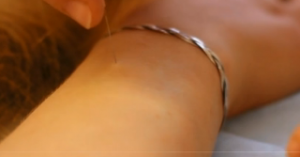
Reflexotherapy is one of the most effective non-therapeutic treatments. Its history dates back to...
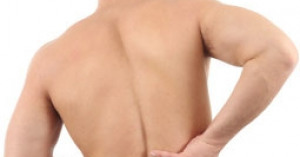
Why do some people develop osteochondrosis at a young age while others don't get it until they are 50?
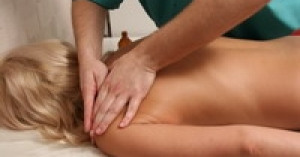
Chiropractic is a set of manually triggered biomechanical techniques to eliminate…
Read more:- Why the legs hurt below the knees after running.
- Magnetic valgus splint real opinions.
- Winter boots for the elderly.
- Field reports on custom-made orthoses.
- Visit to an orthopedist via the Internet.
- Walking in medium heels.
- Overnight orthosis for plantar fasciitis heel spurs.
- Tiptoe walking.
